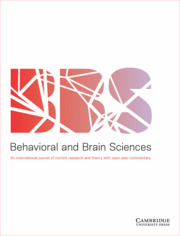Article contents
Behavioral momentum and Pavlovian conditioning
Published online by Cambridge University Press: 17 March 2005
Abstract:
The constructs of behavioral mass in research on the momentum of operant behavior and associative strength in Pavlovian conditioning have some interesting parallels, as suggested by Savastano & Miller. Some recent findings challenge the strict separation of operant and Pavlovian determiners of response rate and resistance to change in behavioral momentum, renewing the need for research on the interaction of processes that have traditionally been studied separately. Relatedly, Furedy notes that some autonomic responses may be refractory to conditioning, but a combination of operant contingencies and enriched Pavlovian stimulus-reinforcer relations may prove effective.
Information
- Type
- Authors' Response
- Information
- Copyright
- Copyright © Cambridge University Press 2004
Footnotes
Commentary on John A. Nevin & Randolph C. Grace (2000). Behavioral momentum and the Law of Effect. BBS 23(1):73–130.
References
- 5
- Cited by

